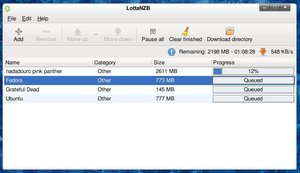I think at some point in our salesperson lives, we’ve all been confronted with making the decision of whether or not we want to be in either inside or outside sales. I wanted to address this issue based on my own experiences in order to stimulate your thinking when deciding on which direction you want to go. I have worked on both sides of the sales world in several different endeavors, and usually did pretty well either way. So, to start off, I want to define both concepts as I see them before I deal with the positive and negatives of each.
According to Wikipedia, sales are defined as “the activities involved in providing products or services in return for money or other compensation. It is an act of completion of a commercial activity.” There are all types of methods that exist today besides inside and outside sales, but that is the focus of this article so I won’t stray from the subject matter at hand.
Basically, with inside sales the customer comes to you at a fixed location of business. The opposite holds true with outside sales. You travel to the customer’s residence or place of business. The following is a comparative list of the differences of the two concepts. Though it may not be as complete as it could be, I have covered the critical differences for the purpose of this article.
Inside Sales
— the customer comes to your business
— the only travel involves driving to work and then home
— sales involve products or services, or both, and the sale of an extended warranty sometimes comes into play, and sometimes these warranty issues get handled at store level
— you usually work a fixed schedule and your place of business has fixed hours of operation
— the customer comes to you at anytime during hours of store operation and in most cases without an appointment
— you are usually compensated with an hourly wage or salary depending on your position in the company
Outside Sales
— you go to the customer’s residence or place of business
— you are constantly traveling to and from an office or place of business and in some instances, out of town
— sales involve products or services, or both, and the sale of an extended warranty sometimes comes into play
— your hours are flexible and do not normally involve a schedule, despite the hours of operation of your main office or headquarters
— you see the customer at a time that is convenient to them as a scheduled appointment
— you are usually compensated on a commission basis once your sales training period is completed
There may be other differences as I mentioned, but for the sake of this article, I’m going to elaborate on these six that I have listed. Hopefully, this will give you some food for thought when trying to choose the direction you want to go.
Critical Difference #1:
In inside sales, the customer comes to you. You never get to leave the store unless you take a break or go out to get your lunch. In most cases, you’re only given a 30 minute lunch break, so you usually end up either bringing your meal back to the store (and hopefully get to eat it without interruption), or you bring a lunch from home or “brown bag” it as it’s often called.
With outside sales, you spend the majority of your day away from your office or headquarters. Your time is basically your own, depending on your scheduled appointments, so you can take your breaks and your lunch whenever you see fit, or when your schedule permits. In some cases, outside sales people will brown bag a lunch and find a park or a spot on the side of the road to eat. But most of the time, you are in the fast food line or at a restaurant possibly entertaining a client for their business.
Critical Difference #2:
In inside sales the only traveling you generally do is from your home to your place of work and back when your workday is over. With outside sales, you are always driving from one place to another. You usually start your morning at the office, schedule your appointments, and then you’re out of there until your day is finished. In some instances, when you are in territory sales, you travel out of town and stay overnight in hotels and motels.
Critical Difference #3:
It’s almost an identical comparison on this one except for the fact that inside sales (specifically in retail) oftentimes involve going out to the customer’s house or business to touch up or repair an item that was purchased from your store. Major warranty issues in the retail industry wind up being handled at the manufacturer’s level, depending on the item. And the manufacturer usually informs you that it’s up to their discretion as to whether they repair or replace the item for you.
Critical Difference #4:
Inside sales is a very predictable animal in the fact that you follow a weekly and hourly schedule. Unless you are salaried and in management, you show up for your shift and then stop for the day based on the schedule prescribed by your supervisor or manager.
It’s totally the opposite with outside sales. Your hours are flexible and based on the appointments that you have made for each day that you work. And herein lays another critical issue, namely efficient time management and scheduling. When you’re traveling from one appointment to another, you need to be aware of variables here that are non-existent in inside sales (e.g. weather and road conditions, stopping for gas or lunch, etc.). These are variables that you take care of either before or after work, or during your lunch break when you’re employed in inside sales.
Critical Difference #5:
Inside sales rarely work on an appointment basis. Whenever a customer walks into your store, and it’s your turn to help someone, consider that an appointment. That is why I have always referred to that as an opportunity, not an “up” or a turn on the sales floor. Not so with outside sales. Your sole existence is predicated by that customer or client’s desire to meet with you at their convenience and on their turf. Just remember that with outside sales you could be meeting with a client at the crack of dawn or late at night. Your inconvenience is what creates convenience for the customer.
Critical Difference #6
This is the major point of the six issues, and lots of times the determining factor between staying inside and going outside. With inside sales, one of the positives here is that you know that every payday you’re getting a check, and you can assume what the amount is going to be. The negative side of this is that’s what the paycheck will always be. Some people see this as a security issue to offset the negative, but the only way your income will grow is if you keep climbing the ladder to management. And believe me, that is not for everybody.
With outside sales, the positive is that there is no limit to your earnings, unless your company puts a ceiling or a cap on those earnings. If they do, that’s not a company you want to stay with. The negative side to commission sales is that you get what you put into it. There will be paychecks that put you on top of the world. And then there will be paychecks that make you wonder how you’re going to get through until the next one. It’s sort of the feast or famine syndrome here. Real Estate and auto sales are the first two types of jobs that come to mind in that area.
My best experience in outside sales was in the advertising world. I was an account executive in a couple of printed publications, and also for a local television station. In advertising, your money is made by the contracts you sell and the length of those contracts. Standard contracts are 3-month, 6-month, and annual. I always considered the 6-month and annual contracts to be my bread and butter or my staple income. Any 3-month contract to me was icing on the cake. An interesting note here is that the shorter the length of the contract, the more difficult it is to renew them.
No matter what outside venue you choose, it will require a tremendous amount of due diligence on your part. You have got to be very good at time management and rigorous when it comes to maintaining your appointment schedule. The rule of thumb in sales is that the client keeps you waiting, not the other way around. Is this inconvenient? Sometimes it is. Deal with it. If you’re going to make it in outside sales, it is a necessary evil.
Over and above everything else I have mentioned prior to this point, before you even consider a career in either inside or outside sales, you have got to know that you have the mentality and the skills to succeed at this. Believe me, there are some people out there who think they can be a salesperson or an account executive. But in about 90% of the cases, they’re better off with a shovel in their hands.
This trade requires talent, and very few people out there have that talent. You have to be able to deal with the highs and lows, so if you have the tendency to snivel when your ego gets bruised, sales are not for you. When you get kicked to the curb, you have to be able to get up, dust yourself off, and go get another one. If you can’t see yourself doing this, sales will never be your cup of tea.
Be very careful in your decision making process. If you want security, stick with inside sales. But if you can handle a little risk, and are willing to invest effort, the rewards can be astounding in outside sales. As always, please feel free to e-mail me your comments and questions at [email protected], and I will respond to them as quickly as possible. Happy selling!




